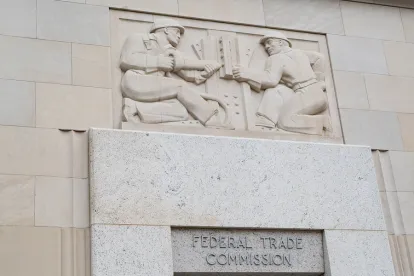The FTC recently reminded market participants to take steps to avoid violating the per se prohibition on interlocking directorates under Section 8 of the Clayton Act. The FTC referred to its previous post on Section 8, which urged firms to monitor market developments to ensure changes in the market do not create unexpected interlocks, and then highlighted two common transaction scenarios where Section 8 issues may arise: mergers and spin-offs.
Mergers or acquisitions can raise Section 8 issues when a company acquires or merges into a new business line if there are members of the acquiring or surviving board that also sit on the board or serve as officers of a now-competing company. Private equity firms that acquire board seats across a diverse portfolio of companies should be particularly mindful of potential interlocks.
Spin-offs also can result in an unlawful interlock if an officer or director retains roles with both the parent and the newly independent firm, if those two companies will continue to compete in a line of business.
Why does this matter?
Section 8 of the Clayton Act prohibits a “person” (i.e., an individual or a company) from simultaneously serving as an officer or director of two competing corporations, creating an interlocking directorate. Section 8 is a prophylactic statute designed to prevent unlawful collusion through the mechanism of an interlock. Accordingly, violations are per seunlawful, and a finding of liability does not require proof of actual or likely competitive harm.
Under the 2019 thresholds, Section 8’s ban on interlocks excludes corporations that have capital, surplus and undivided profits aggregating less than $36,564,000. In addition, there are three de minimis exceptions to the prohibition on interlocking directorates that permit horizontal interlocks for two companies with few overlapping products:
-
the competitive sales of either corporation are less than $3,656,400,
-
the competitive sales of either corporation are less than 2 percent of that corporation’s total sales, or
-
the competitive sales of each corporation are less than 4 percent of that corporation’s total sales.
What happens if an interlock is discovered?
The Federal Trade Commission and the U.S. Department of Justice both enforce Section 8. While the agencies readily enforce Section 8, few claims reach litigation. The government is limited to injunctive relief, meaning it may only seek an order that eliminates the interlock to remedy a violation (e.g., the FTC closed its investigation into interlocks involving Google, Inc. and Apple, Inc. after a common member resigned from Google’s board and Google’s CEO resigned from Apple’s board). There is a one-year grace period to fix interlocks that subsequently arise (e.g., interlocks resulting from a merger or spin-off), although the interlocked individual is prohibited by Section 1 of the Sherman Act from using his or her role for anticompetitive purposes. The government does not assess civil penalties for Section 8 violations, nor are there criminal violations.
Private parties also may sue to enforce Section 8. Injunctive relief is the typical remedy, but private parties may obtain treble damages (if damages can be proven) and attorneys’ fees.
Firms should be mindful of and consult experienced antitrust counsel regarding Section 8 issues when considering potential restructurings or acquisitions. Companies with existing horizontal interlocks that are permissible due to Section 8’s threshold requirement or exceptions also should regularly monitor their compliance with Section 8 (e.g., monitor company’s assets and check annually against the jurisdictional threshold, track new products or offerings for the interlocked companies that may create new areas of competitive sales, etc.).





 />i
/>i
